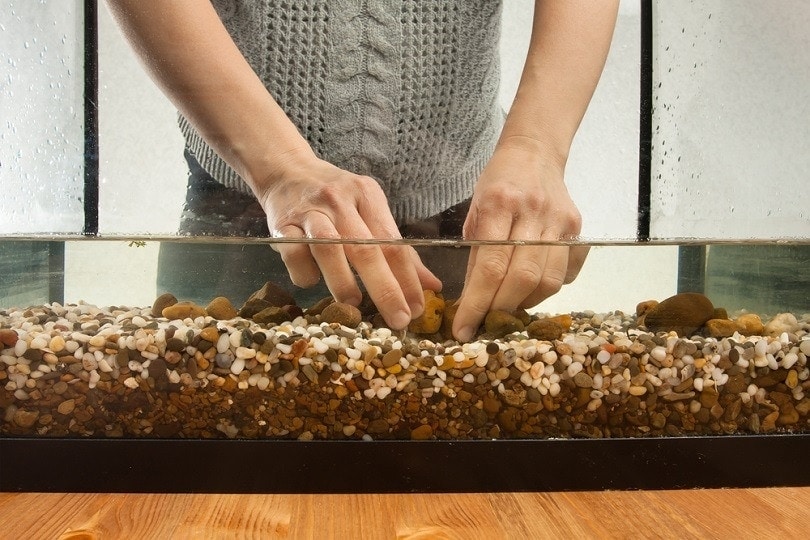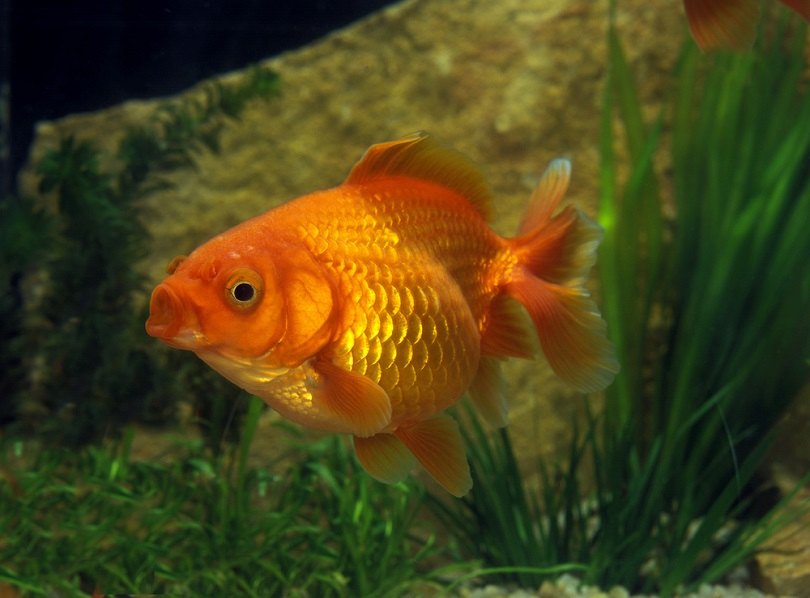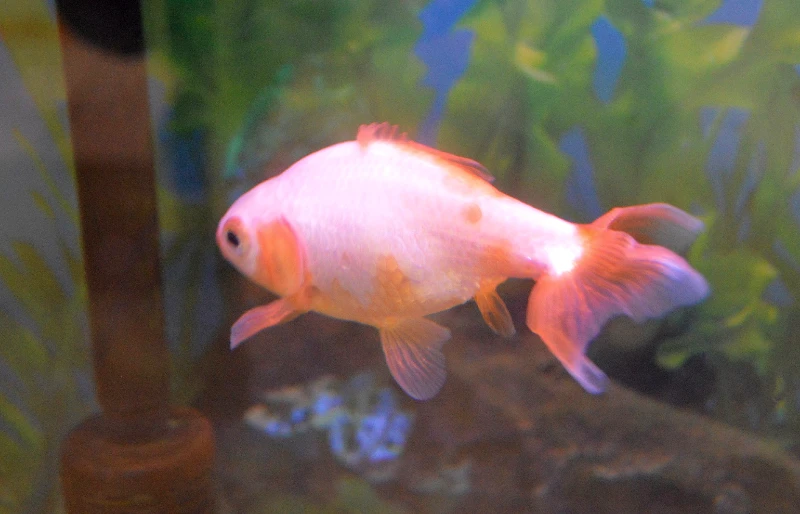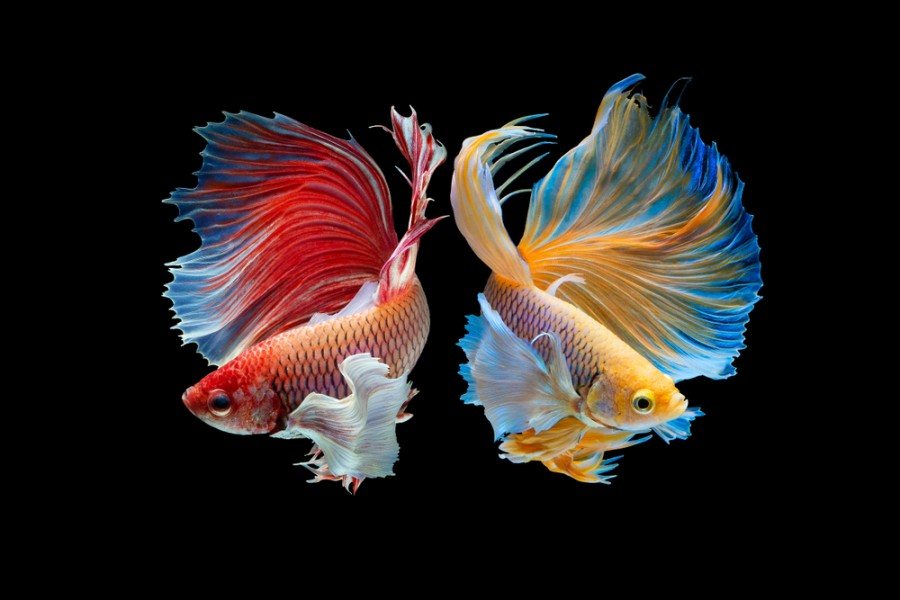Goldfish Fry: The Ultimate Guide to Raising Your Fish Babies
Updated on
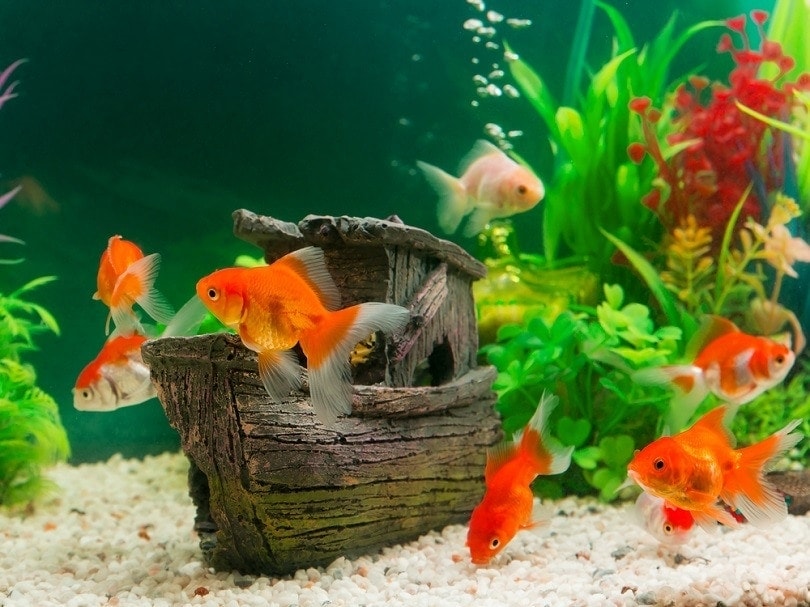
Click to Skip Ahead
Goldfish aren’t just one of the most popular pet fish in the U.S.; they’re social, entertaining, and beautiful fish. On top of those characteristics, they’re relatively easy to breed. Some people end up with goldfish eggs accidentally when spring rolls around, while others may intentionally allow their fish to breed. Either way, it’s important for you to know the steps to take to help your goldfish make it to adulthood.
| Size: | 5–16 inches |
| Lifespan: | 10–15 years |
| Suitable for: | Beginners and experienced fish owners alike |
| Temperament: | Social, curious, active |
Goldfish Characteristics
Cost of Raising Goldfish Fry
While some people may opt to leave their goldfish eggs in the tank with the parents and “let nature take its course,” this is most likely to end up with lots of fry being eaten or killed by their parents or other tank mates. To give your fry the best chance at survival, they’ll need to be in a separate container or a breeder box that the other fish in the tank can’t access. The good news is that you can use clean plastic tubs, small aquariums, and even clean buckets to keep your goldfish fry.
Since the container your baby fish will be in can be inexpensive, that shouldn’t be a big worry. However, you will need to invest in a variety of tools to help you, like a very small fishnet, a turkey baster, an air pump, an air stone, and a brine shrimp hatchery. These items are all relatively inexpensive on their own, but you can expect to spend around $30–50 to get things set up for your goldfish fry.

Life Stages of Goldfish and How to Care for Them
Egg

Remove the eggs from the parent’s tank as soon as they’re laid and fertilized to prevent egg losses to tank mates. Move the eggs to your prepared container, making sure the water temperature is between 70˚F and 75˚F (21°C and 24°C) for incubation. You can expect the eggs to hatch within 2–7 days of being laid. Eggs that aren’t visibly developing are infertile and won’t produce offspring. These should be discarded
Hatchling (2 days)
After a few days of development, your eggs will begin to hatch. Immediately after hatching, they usually hang on the side of the container they’re in. You may see them moving rapidly around the container, but they will mainly stay relatively still.
During the first couple of days of life, baby goldfish retain a small amount of their egg sac, which allows them to sustain themselves even if they aren’t fed. During the first 2 days, you should not feed your goldfish hatchlings.
You should provide your baby goldfish with a sponge filter or air stone. A sponge filter is ideal because it encourages the colonization of beneficial bacteria to help maintain the water quality. Hatchlings and fry do not need a full tank setup like adult goldfish, and things like décor and plants will just make tank care more difficult.
Fry (3 days to 1 week)
After the first couple of days, your fry will begin to swim around their container. At this time, they’ll be ready to start eating. Because of their tiny size, there are few options. The best options are baby brine shrimp, but you can also offer a powdered fish food that is designed for fry or very small fish. Additional choices include infusoria or egg yolk powder mixed with water.
Your fry will need to eat multiple times per day, which also means they’ll start producing a lot of waste. Use the turkey baster and small fishnet to keep the container free of debris. You can also use airline tubing as a siphon to keep the container clean. Make sure to check the removed water for escaped fry before dumping it out.
Fry (2 weeks to 1 month)
At this age, your goldfish will start becoming more recognizable as goldfish, and around 2 weeks of age, you’ll be able to start spotting single or double tails on your fry. They will also start to develop some of their adult colors.
During this time, you’ll continue to feed your fry multiple times per day. As they age, slowly reduce the baby brine shrimp and work to wean them over to fish food completely. Gel foods like Repashy and powder and very fine fish foods are all acceptable at this age.
Juvenile (1 month+)
By around a month of age, your goldfish fry will begin to look significantly closer to their adult brethren. They will develop their colors fully, as well as continue to develop their fin shape. The small feeder goldfish you see at pet stores are typically around 3 or 4 months old, so this should give you an idea of how rapidly they will grow! Continue to feed your juvenile goldfish multiple times per day but begin weaning them down to how often they’ll be fed as adults.
Common Problems
Water Quality Issues
Water quality problems aren’t just an issue in aquariums containing adult fish—they also occur in fry tanks. This often occurs because of the buildup of waste, uneaten food, and dead fry in the water. Ammonia is very deadly to goldfish fry, so it’s necessary to perform partial water changes and remove visible detritus from the container at least once per day. Poor water quality can lead to a large number of fry deaths, and many people don’t realize that it’s the cause of their large fry losses.

Culling
Baby goldfish are susceptible to hatching with defects. These may cause them to not meet the standard of their breed, but there’s also a possibility that you’ll have fry with a defect that will significantly reduce their quality of life. Culling is the process of removing the weak or sick fish from the desirable fish. If you aren’t dealing with a quality-of-life issue, you can simply move the “low-quality” fish to a new environment.
If you have a fish that is suffering, though, then you will need to euthanize them. The most humane way to do this at home is to use clove oil. Mix clove oil with a small amount of warm water, then add it slowly to a container containing your sick fish. The recommended concentration of clove oil for the euthanasia of fish is 0.20 mL of clove oil per 500 mL of water; this works out to around 0.4 mL per liter of water (a liter is approximately 35 fluid ounces).
It is considered acceptable to add more clove oil for the purposes of humane euthanasia. Clove oil will cause the fish to fall into a deep sleep, but they will stop breathing while they’re asleep. Wait 10–30 minutes for no signs of gill or eye movement before disposing of the fish.
Final Thoughts
Although it isn’t particularly difficult to care for goldfish fry, it is something that requires a time commitment. You’ll need to provide care to your fry multiple times per day for the first couple of months of life. Prepare yourself ahead of time with knowledge and supplies to give your fry the best shot at a happy, healthy life.
Featured Image Credit:



